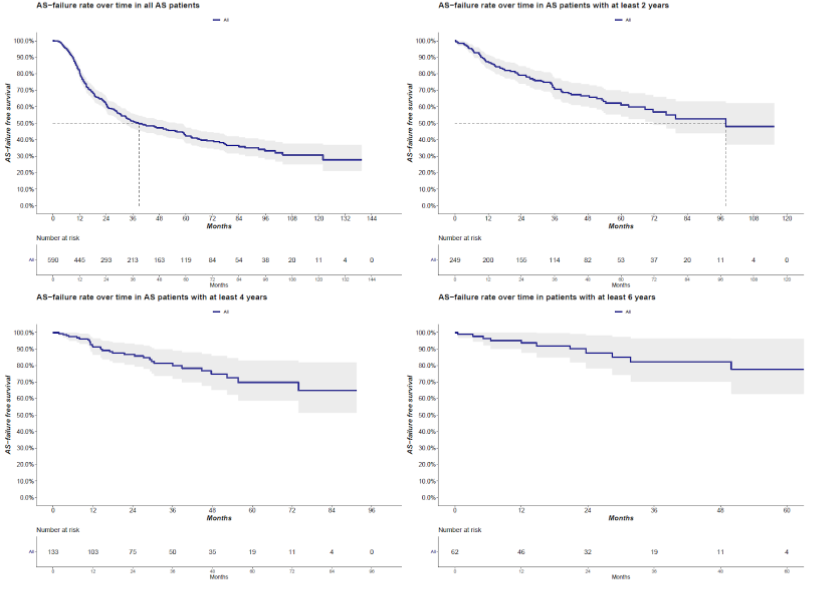Back
Poster, Podium & Video Sessions
Moderated Poster
MP43: Prostate Cancer: Localized: Active Surveillance
MP43-19: Drop-out Rates from Active Surveillance for Disease Progression Remain Consistent and Not Negligible Over Time. A Plea for Long-term Assessment Based on a Large, Prospectively Collected Active Surveillance Cohort
Sunday, May 15, 2022
10:30 AM – 11:45 AM
Location: Room 222
Luigi Nocera*, Milan, Italy, Riccardo Leni, Milano, Italy, Armando Stabile, Milan, Italy, Giorgio Gandaglia, Elio Mazzone, Milano, Italy, Gabriele Sorce, Francesco Pellegrino, Milan, Italy, Francesco Barletta, Simone Scuderi, Milano, Italy, Andrea Gallina, Nicola Fossati, Lugano, Switzerland, Emanuele Zaffuto, Milan, Italy, Marco Moschini, Lucerne, Switzerland, Nazareno Suardi, Genoa, Italy, Shahrokh F. Shariat, Vienna, Austria, Francesco Montorsi, Alberto Briganti, Milano, Italy

Luigi Nocera
Vita-Salute San Raffaele University, San Raffaele Hospital
Poster Presenter(s)
Introduction: The majority of active surveillance (AS) protocols for prostate cancer (PCa) patients rely on baseline clinical and histological characteristics for optimal follow-up schedule. Evidence on how rates of AS failure change over time is missing. We hypothesized that drop-out rates from AS might decrease according to the time elapsed from the initial inclusion in AS protocols.
Methods: Our analyses relied on 590 patients identified in our prospectively maintained AS program (2006-2021). All patients represented AS candidates according to PRIAS criteria (cT stage
Results: Median follow-up was 50 months. Median PSA was 5.9 ng/ml, while median percentage of positive biopsy cores was 12%. Overall,137 patients (23%) underwent mpMRI prior to first biopsy. Figure 1 shows AS failure rate over time in the overall population, and at 2, 4 and 6-year landmark analyses. Overall, 2-year AS failure-free survival was 62%, 79%, 87% and 88% for the overall, 2-year, 4-years and 6-year landmark populations. Similarly, 4-year AS failure-free survival was 47%, 67%, 75% and 82% for the overall, 2-year, 4-years and 6-year landmark populations.
Conclusions: Drop-out rates from AS varies according to the time on AS. The longer the follow-up, the lower the probability of drop-out regardless PSA value, mpMRI results and follow-up biopsy. However, the risk of progression should not be considered negligible even after 4-year on AS since 20% of those remaining on AS for 4 years will progress at 6 years.
Source of Funding: None.

Methods: Our analyses relied on 590 patients identified in our prospectively maintained AS program (2006-2021). All patients represented AS candidates according to PRIAS criteria (cT stage
Results: Median follow-up was 50 months. Median PSA was 5.9 ng/ml, while median percentage of positive biopsy cores was 12%. Overall,137 patients (23%) underwent mpMRI prior to first biopsy. Figure 1 shows AS failure rate over time in the overall population, and at 2, 4 and 6-year landmark analyses. Overall, 2-year AS failure-free survival was 62%, 79%, 87% and 88% for the overall, 2-year, 4-years and 6-year landmark populations. Similarly, 4-year AS failure-free survival was 47%, 67%, 75% and 82% for the overall, 2-year, 4-years and 6-year landmark populations.
Conclusions: Drop-out rates from AS varies according to the time on AS. The longer the follow-up, the lower the probability of drop-out regardless PSA value, mpMRI results and follow-up biopsy. However, the risk of progression should not be considered negligible even after 4-year on AS since 20% of those remaining on AS for 4 years will progress at 6 years.
Source of Funding: None.


.jpg)
.jpg)